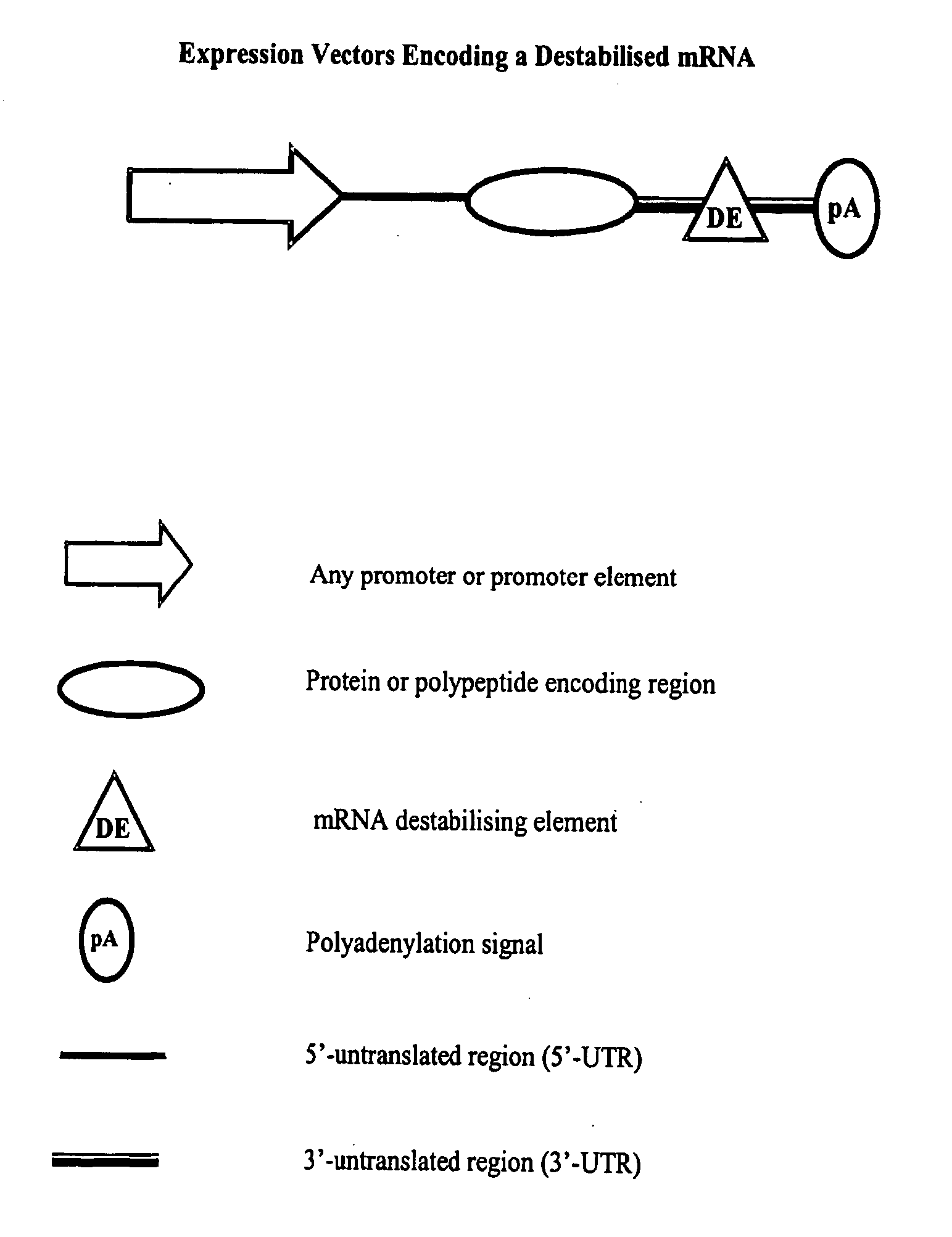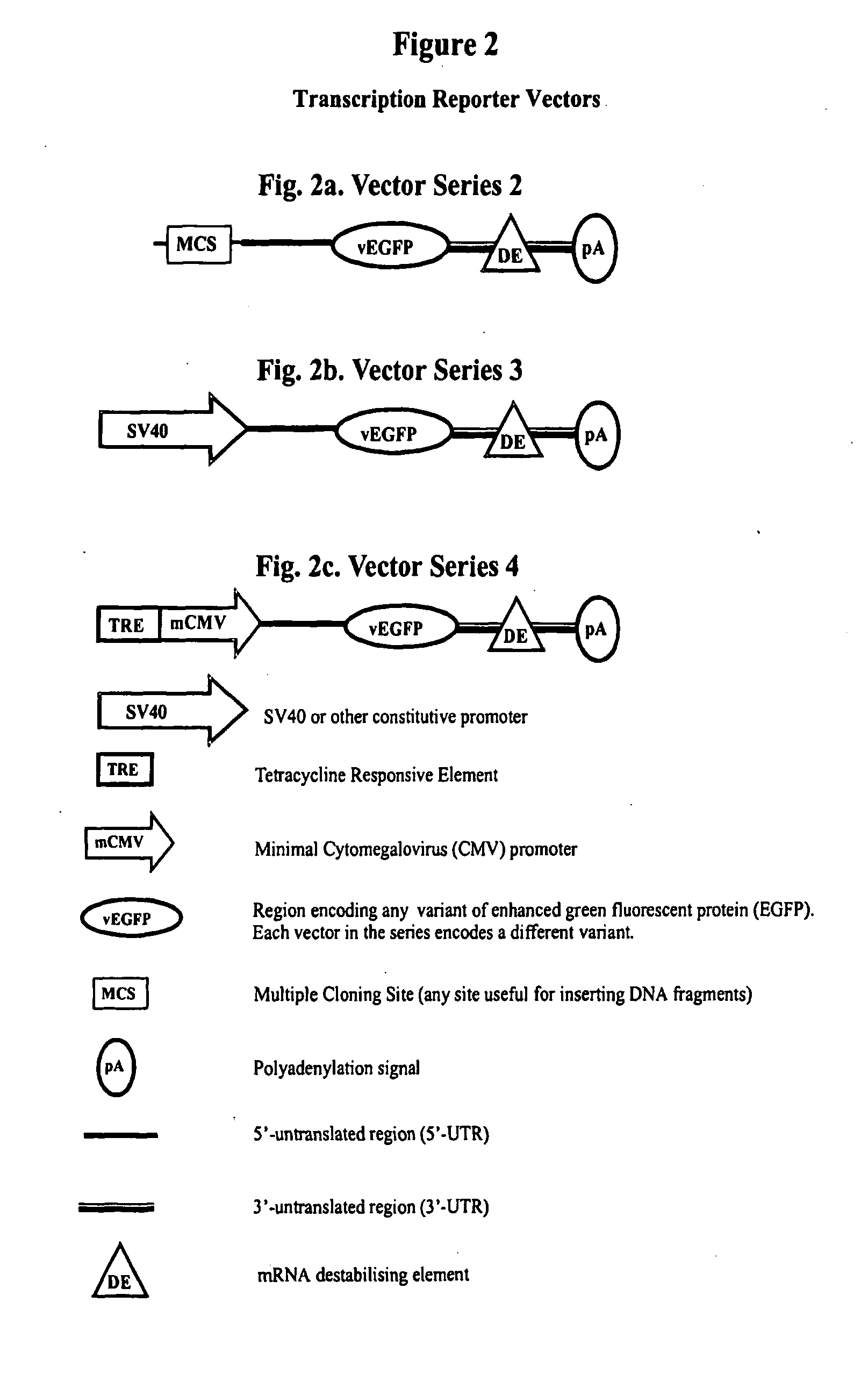Constructs for gene expression analysis
a technology of constructs and gene expression, applied in the field of constructs for gene expression analysis, can solve the problems of limited real-time analysis of gene expression, limited application, expensive and perishable reagents, etc., and achieve the effect of improving the real-time determination of gene expression and determining transcript stability
- Summary
- Abstract
- Description
- Claims
- Application Information
AI Technical Summary
Benefits of technology
Problems solved by technology
Method used
Image
Examples
example 1
Cloning DNA Elements into Vectors
[0227] Cloning is carried out according to existing methods, using restriction enzyme sites in the MCS or direct ligation of PCR products in the case of vectors with a “T overhang” in the MCS. With respect to post-transcriptional reporter vectors, however, the inclusion of a MCS in the 3′-UTR or other regions is a significant improvement over current vectors, which were designed for transcriptional or other studies and do not contain convenient cloning sites in these locations.
example 2
[0228] Co-transfection of control and test vectors is performed as per existing methods (e.g., Fugene [Boehringer Mannheim, Mannheim, Germany] or electroporation), except in the case of the single (e.g., bi-directional) vector systems described above, which require only one vector and thus eliminate inaccuracies associated with co-transfection
example 3
Measurement of Reporter Expression
[0229] An immediate advantage of the vGFP system is that reporter expression can be visualized directly in living cells, simply by viewing the tissue culture plate or flask under a fluorescent microscope. Therefore, poor transfections can be identified and discarded before any additional time is wasted. Quantitative measurement can be performed using a fluorometer (e.g., 96 well plate format) and since live cells can be measured, the same samples can be measured repeatedly e.g., in a time course.
[0230] A further advantage compared to luciferase and other enzyme based assays is that flow cytometry can also be used to measure reporter levels.
PUM
| Property | Measurement | Unit |
|---|---|---|
| time | aaaaa | aaaaa |
| concentration | aaaaa | aaaaa |
| time | aaaaa | aaaaa |
Abstract
Description
Claims
Application Information
 Login to View More
Login to View More - R&D
- Intellectual Property
- Life Sciences
- Materials
- Tech Scout
- Unparalleled Data Quality
- Higher Quality Content
- 60% Fewer Hallucinations
Browse by: Latest US Patents, China's latest patents, Technical Efficacy Thesaurus, Application Domain, Technology Topic, Popular Technical Reports.
© 2025 PatSnap. All rights reserved.Legal|Privacy policy|Modern Slavery Act Transparency Statement|Sitemap|About US| Contact US: help@patsnap.com



